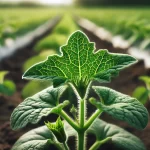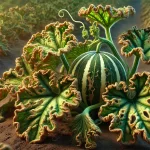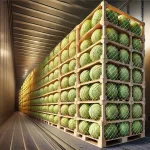Extending the postharvest shelf life of melons is essential for preserving their quality, flavor, and nutritional value, as well as reducing economic losses. Below are science-based strategies and agricultural practices that help prolong melon freshness after harvest.
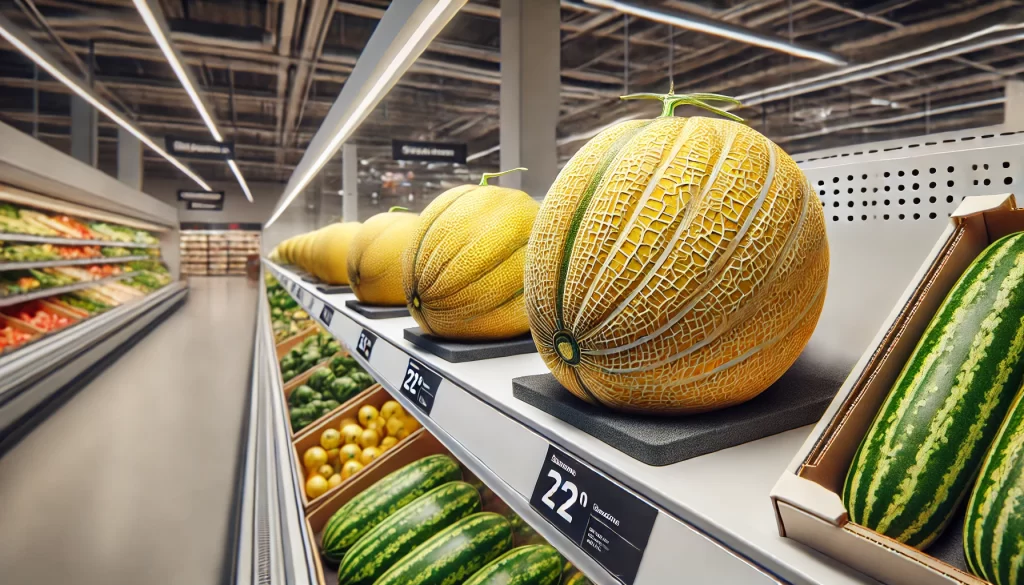
Immediate Postharvest Practices
1. Harvest at the Optimal Maturity Point
- Maturity Detection: As detailed in previous articles, harvesting melons at their optimal maturity ensures the fruit has the perfect balance of firmness and sweetness, which favors preservation.
- Cautious Handling: Avoid bruises and mechanical damage during harvest to prevent pathogen entry and accelerate deterioration.
2. Cleaning and Sorting
- Surface Cleaning: Gently clean the melon with water to remove dirt and potential fungal spores from the surface without damaging the skin.
- Sorting: Separate and remove any melons with imperfections or damage that may affect the quality of the rest of the batch.
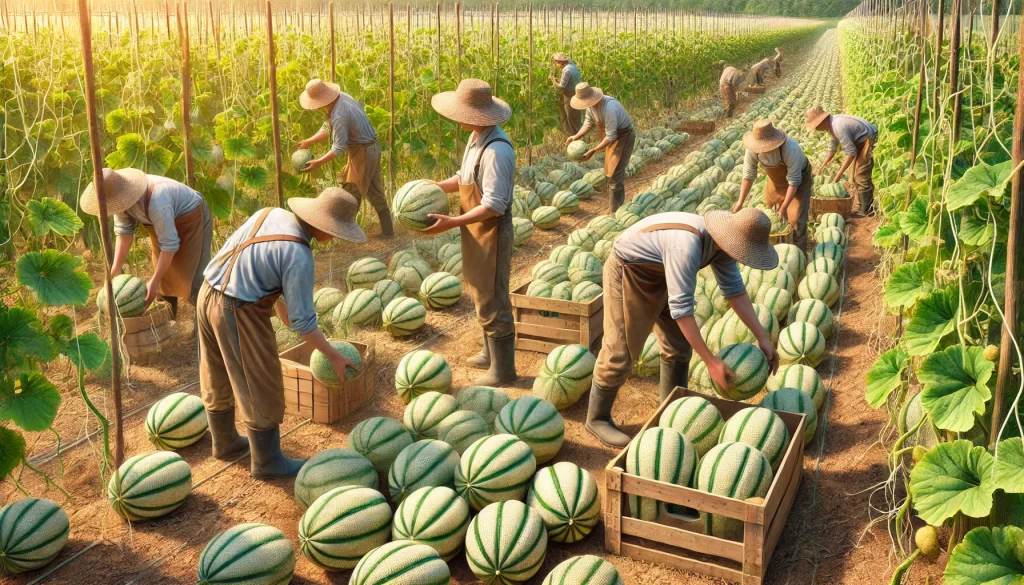
Proper Storage Conditions
1. Temperature Control
- Rapid Cooling: Place melons in a cold environment (7°C – 10°C) as soon as possible after harvest to slow down metabolism and senescence.
- Cold Chain: Maintain a constant temperature during storage and transport to avoid fluctuations that could cause condensation and promote mold growth.
2. Humidity and Ventilation Control
- Relative Humidity: Maintain humidity levels between 90-95% to prevent dehydration without promoting mold formation.
- Ventilation: Ensure proper air circulation to eliminate ethylene and avoid localized moisture points that could promote disease.
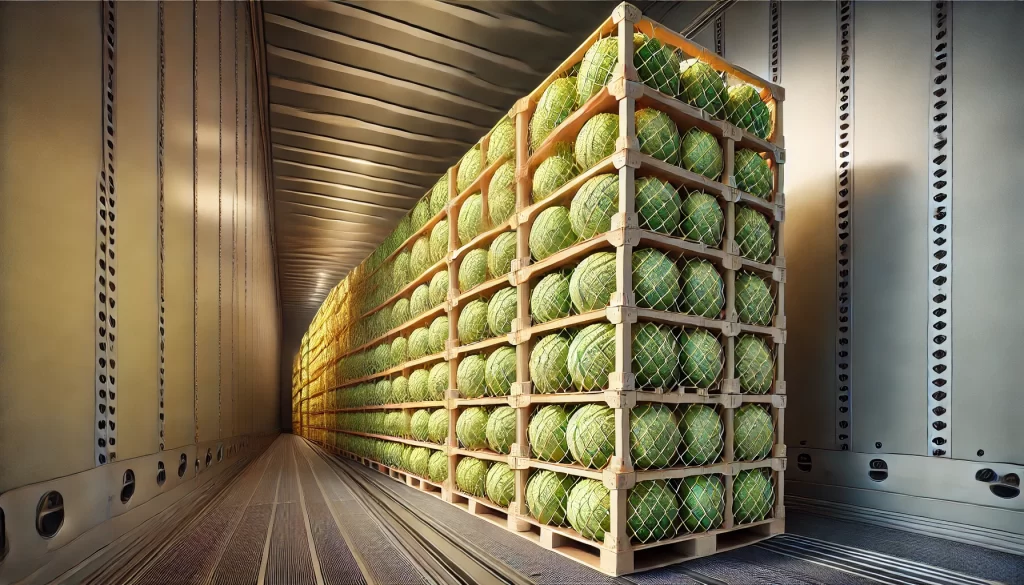
3. Controlled and Modified Atmosphere
- Controlled Atmosphere: Reduce oxygen levels and increase carbon dioxide in storage rooms to slow down ripening and extend melon freshness.
- Modified Atmosphere Packaging (MAP): Use wraps or containers that alter the air composition around the melon to limit respiration and decay.
Postharvest Treatments and Technologies
1. Edible Coatings
- Application of Protective Coatings: Coatings based on wax, biopolymers, or vegetable oils can create a barrier that reduces moisture loss, protects against pathogens, and maintains fruit quality.
- Benefits: These coatings are safe for consumption and may include antioxidants or antimicrobials to enhance preservation.
2. Antimicrobial Treatments
- Disinfection Solutions: Apply treatments with chlorine, hydrogen peroxide, or citric acid solutions to reduce microbial load on the melon surface.
- Pathogen Reduction: These practices help prevent fungal and bacterial infections during storage.
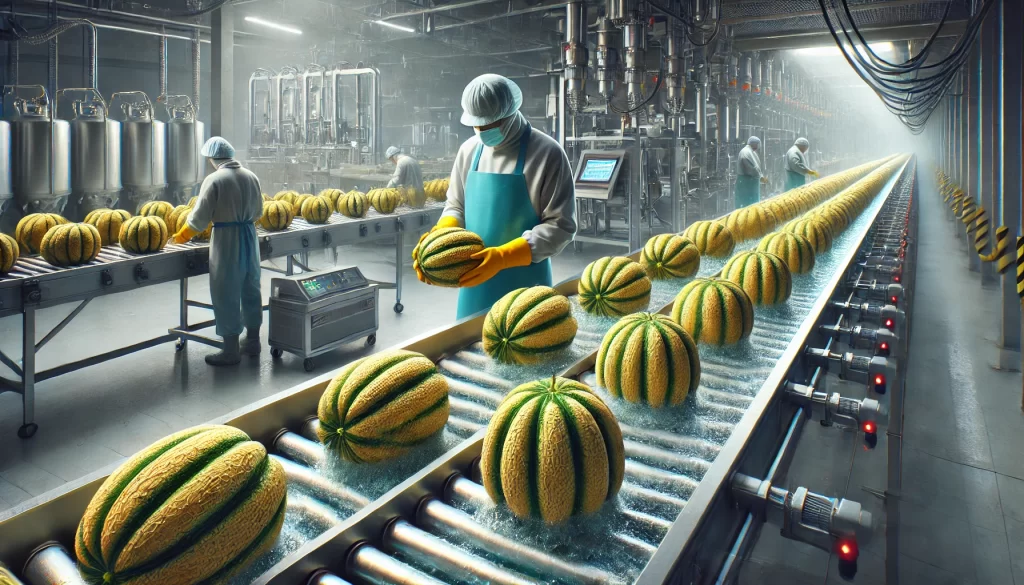
3. Packaging Technology
- Ventilated Packaging: Use boxes and containers that allow air circulation and reduce pressure on fruits, preventing bruising.
- Antimicrobial Materials: Use packaging with antimicrobial properties to reduce microorganism proliferation.
Management and Monitoring During Storage
1. Regular Inspection
- Quality Monitoring: Regularly check stored melons for early signs of deterioration such as spots, mold, or changes in texture.
- Separation of Damaged Fruits: Immediately remove any melons showing signs of deterioration to prevent the spread to other fruits.
2. Adjusting Conditions
- Adjust Temperature and Humidity: Based on the evolution of the fruits and environmental conditions, adjust storage parameters to maximize freshness.
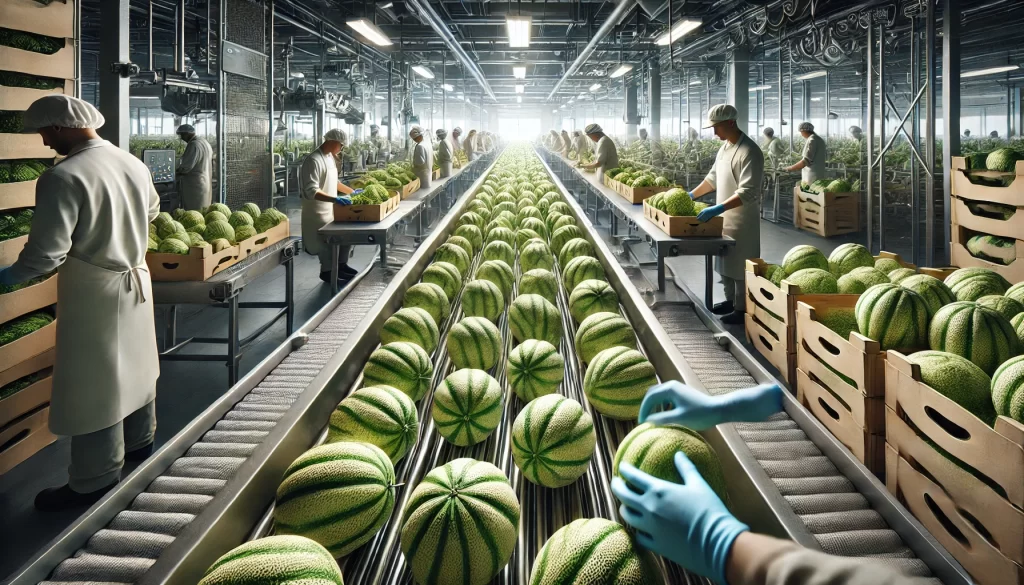
Conclusion
Increasing the shelf life of melons after harvest involves a comprehensive approach that includes careful harvesting practices, optimal storage and transportation conditions, and advanced technologies such as controlled atmospheres and edible coatings. By implementing these strategies, producers can ensure that melons maintain their freshness, flavor, and quality for a longer period, reducing losses and improving profitability.
References
- Kader, A.A. (2002). Postharvest Technology of Horticultural Crops. University of California Agriculture and Natural Resources.
- Singh, P., & Zhang, Q.H. (2009). “Shelf Life Extension of Fresh-Cut Fruits and Vegetables.” Postharvest Biology and Technology, 51(3), 203-210.
- Bajpai, P., & Kang, S.M. (2017). “Edible Coatings and Treatments to Extend the Shelf Life of Fruits: A Review.” Comprehensive Reviews in Food Science and Food Safety, 16(3), 549-567.
 AgronoBlog – Agriculture Blog
AgronoBlog – Agriculture Blog 